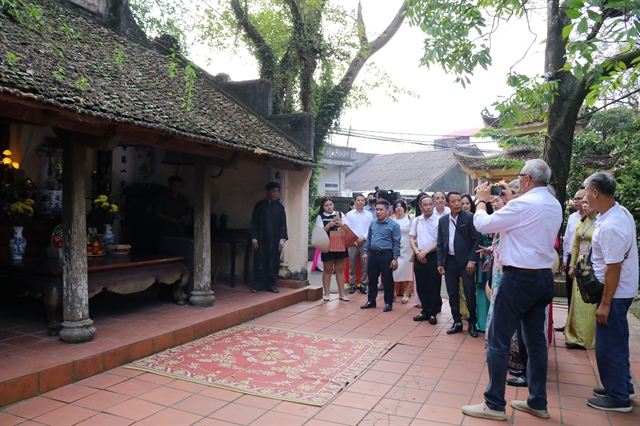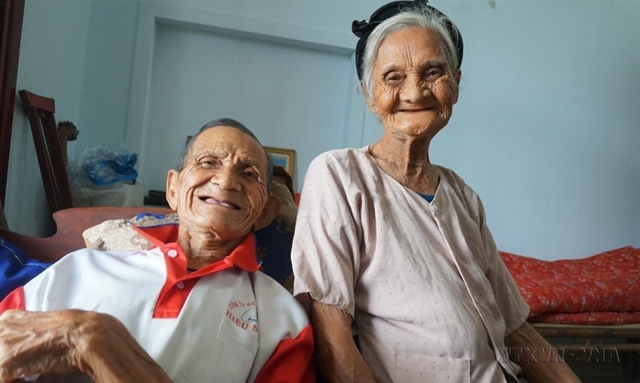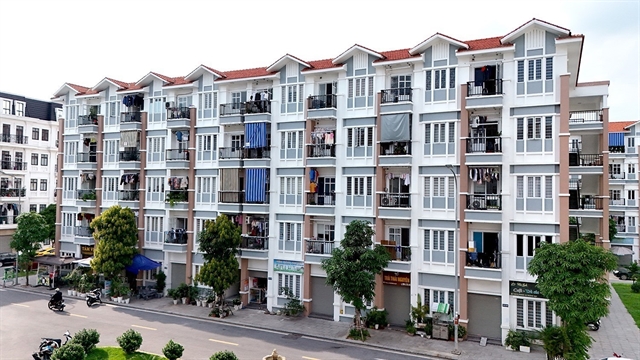 Society
Society

 |
| An elderly couple taken care of at home by their children in Liên Hương Commune, Thạch Hà District in the central province of Hà Tĩnh. VNA/VNS Photo Phan Quân |
HÀ NỘI — Việt Nam is starting to see a rapidly ageing population, opening up a large but as-yet untapped demand for specialised housing for the elderly.
Experts believe that changes in population structure will encourage demand for housing for the elderly in the near future, and that investors should quickly take advantage of the trend to meet the market.
Current context
Việt Nam's ageing population is driven by increased life expectancy and declining fertility.
By 2030, the number of people aged 60 and over is expected to be approximately 18 million. At the same time, the fertility rate in Việt Nam has decreased rapidly in recent years. From 1.96 children per woman in 2023, it decreased to 1.91 last year – the lowest level ever recorded.
Statistics show that since 2011, Việt Nam has entered the aging phase, and is one of the countries with the fastest ageing rate in the world.
Last year, the number of people aged 60 and over was 14.2 million, an increase of 2.8 million compared to 2019 and an increase of 4.7 million compared to 2014.
This trend is largely expected to continue, with the proportion of elderly people increasing as the average life expectancy for Vietnamese people is set to rise due to improved living conditions resulting from economic development.
Meanwhile, the number of young people is gradually shrinking due to low birth rates, with little chance of a rebound.
Many experts predict that Việt Nam will an aged society by 2036 and a ‘super-aged’ society by 2049.
Developed countries like Japan, South Korea, China and those in Europe have shown that it is very difficult to recover from low birth rates.
The expected change in population structure underscores an urgent need to develop housing models, health care and specialised facilities for the elderly.
The Việt Nam Association of Real Estate Brokers (VARS) commented that Việt Nam has millions of elderly people in need of care.
But, in reality, the country currently has only about 400 nursing homes, with about 50 per cent being charitable centres or State-funded facilities.
In particular, there is a shortage of high-end services, such as real estate products combined with home health care services, as the number of rich elderly people soars.
Areas with high average life expectancy are often places with developed economies.
VARS cited data showing that last year, Bà Rịa-Vũng Tàu, Đà Nẵng, HCM City, Hà Nội and Đồng Nai were the top five localities for life expectancy in Việt Nam. They also have among the highest per capita incomes in the country.
In contrast, provinces with less developed economies, such as Lai Châu, Điện Biên and Kon Tum, have the lowest average life expectancy in Việt Nam.
Potential
 |
| A social housing complex in the northern port city of Hải Phòng. VNA/VNS Photo Tuấn Anh |
In fact, most elderly people are still cared for at home by their children and grandchildren and tend to prioritise receiving care services at home or near their family.
This highlights the vast potential for developing a model of integrated community health housing – a place that provides a safe and comfortable living space but still maintains a connection with family.
The middle and upper classes are expanding rapidly, with typical age ranges of the middle class being 30-55 years old and the upper class being 40-65. These social classes will help drive the demand for high-end housing, including housing for the elderly, well into the next decade. As they become more financially well-off, they will have more options for living spaces suitable for old age.
VARS experts believe that Việt Nam has competitive advantages in its natural landscapes, culture and relatively low cost of living compared to many developed countries, so it can easily attract both retired foreigners and repatriated overseas Vietnamese.
In countries with ageing populations like Japan, Germany, Sweden or Australia, housing for the elderly is no longer simply a place to live, but has been enhanced into an integrated living ecosystem. It combines housing, medical care, community living and psychological support.
Some prominent models, such as Continuing Care Retirement Communities (CCRC) in the US and Japan, are providing multi-layered services – from independent housing with medical supervision, to special care areas for people with chronic diseases.
The common point of these models is to support the elderly to live independently, maintain social connections and receive professional, continuous care tailed to their evolving health needs.
A major facet of these models is the demand for a comprehensive ecosystem, not just individual projects.
VARS therefore recommends that promoting housing models for the elderly should be considered a medium- and long-term strategy for investors.
These models not only meet societal needs but also help businesses anticipate trends, take advantage of input costs in suburban areas and benefit from the State's incentive policies.
Investors should approach this model from the perspective of a comprehensive living ecosystem, combining housing, healthcare, community amenities and family connections, to create humane, sustainable and distinctive products on the market.
Housing for the elderly is expected to open up a wide potential market with products that suit the needs and psychology of modern older people.
These products would be different from traditional nursing homes, which mainly focus on medical care and living for the frail or single elderly people.
Typical housing models for the elderly are high-rise buildings integrating home health care services, developed in urban areas on the outskirts of large cities, where the elderly and their partners can live together or easily maintain connections with their families.
Apartments should be designed to suit the needs of this population, integrating on-site medical services, community amenities and green living spaces.
In addition, housing projects for the elderly are often associated with suburban areas on the outskirts of city centres, where land prices are relatively cheap compared to the urban core, helping investors reduce investment costs and benefit from increasingly improved transport systems, shortening the distance between the centre and the suburbs, VARS experts emphasised. — VNS




